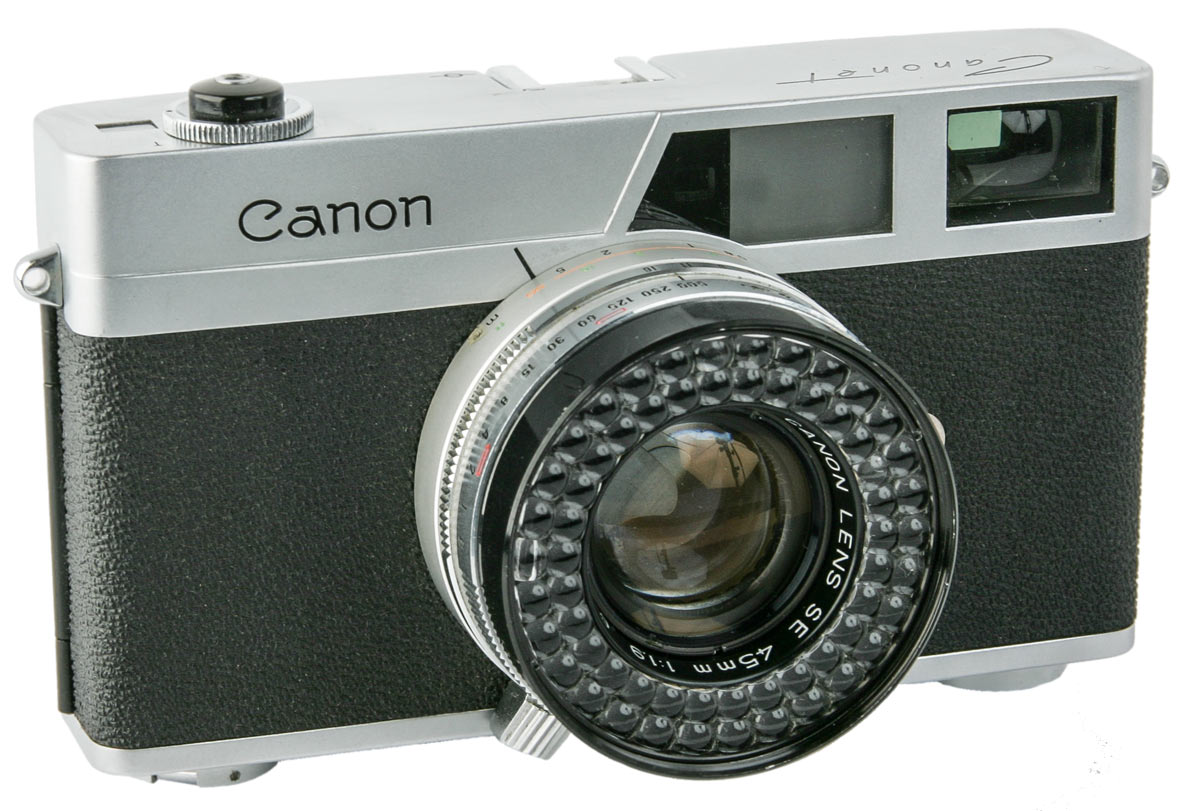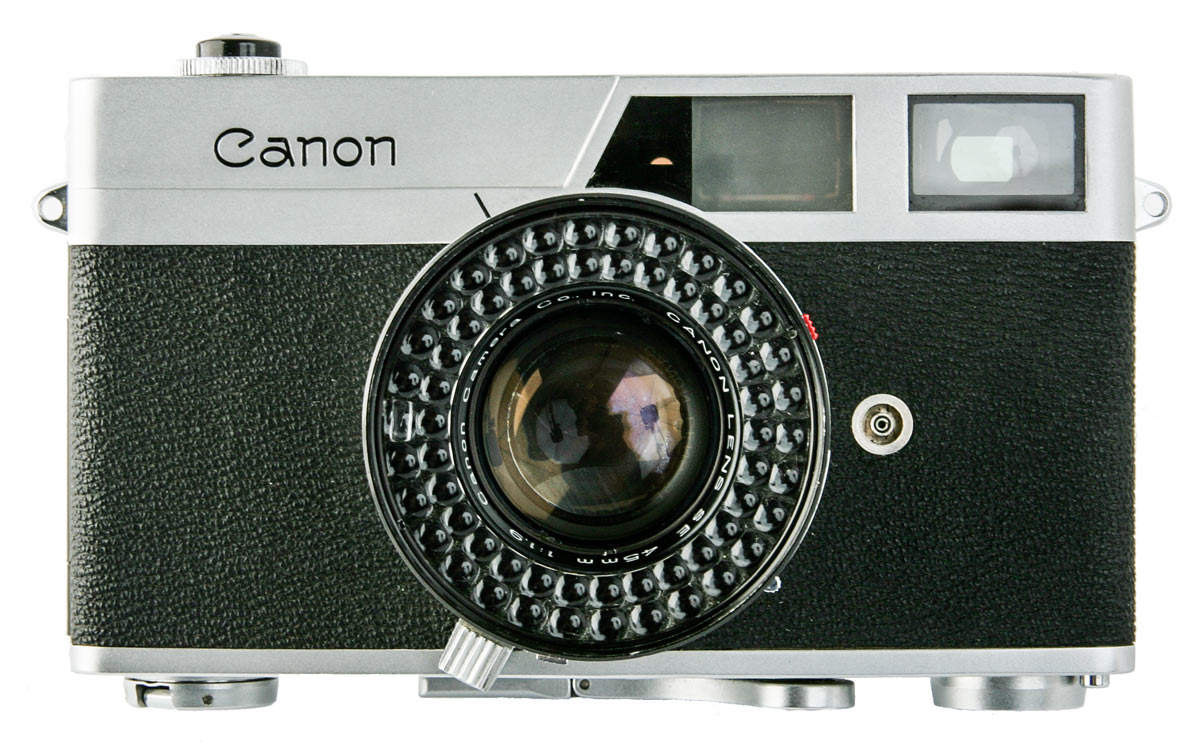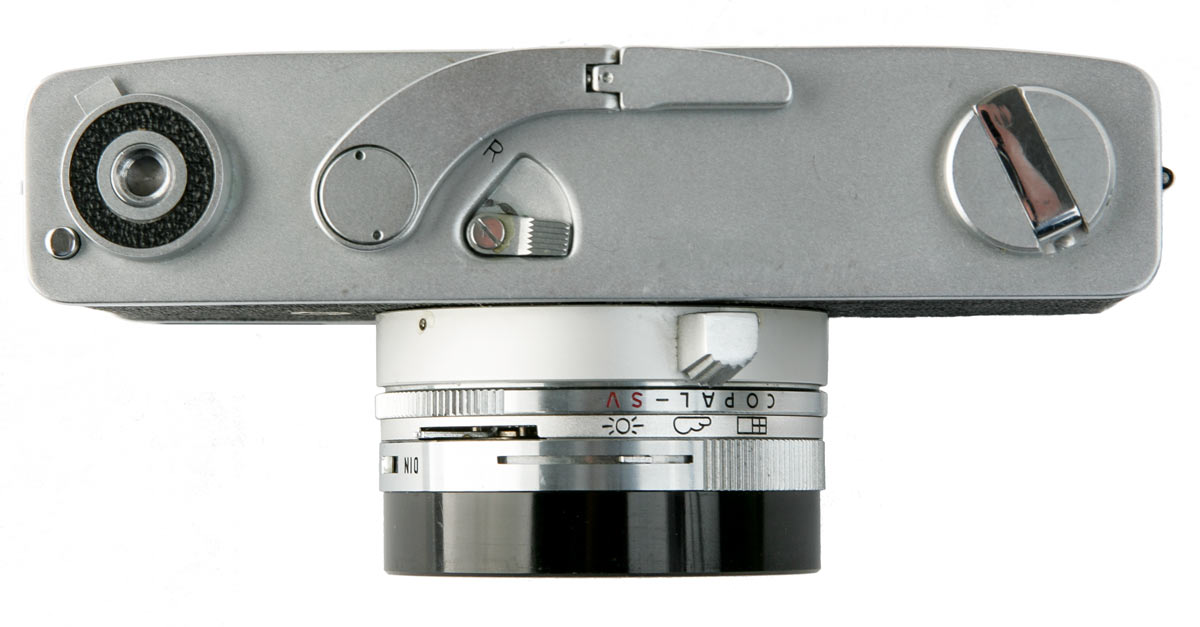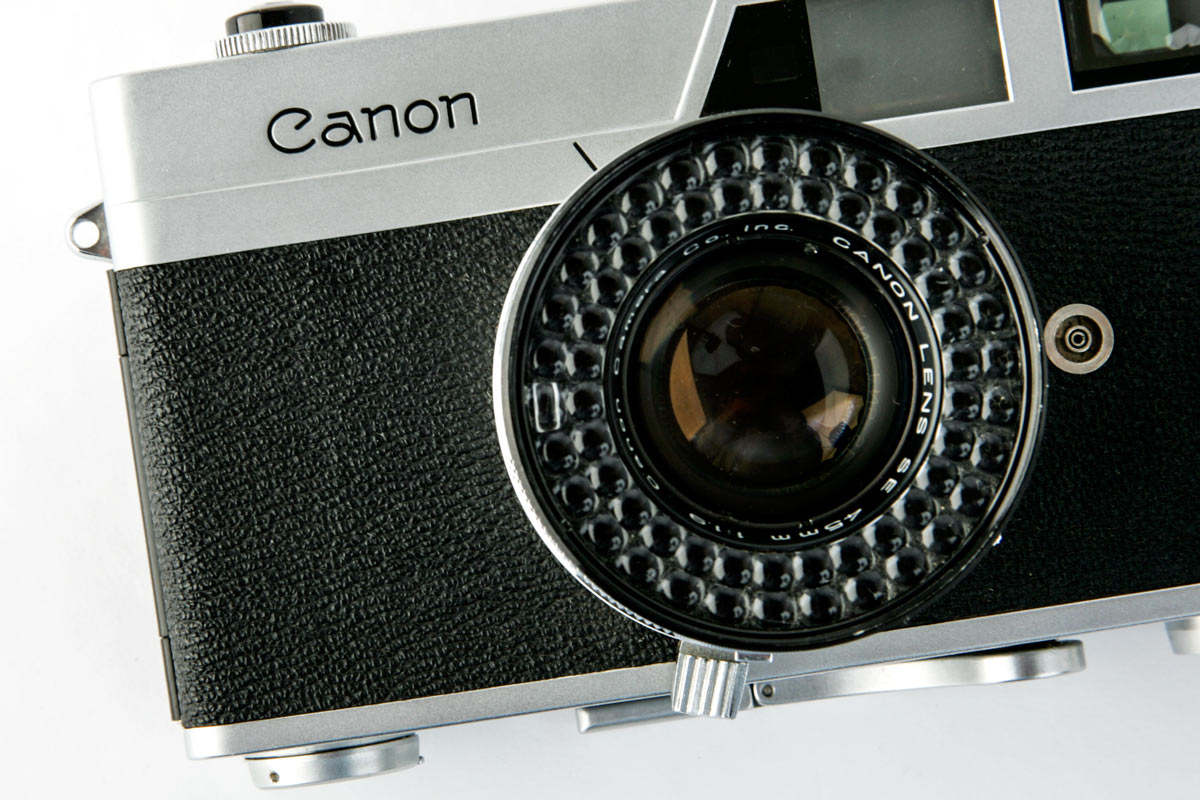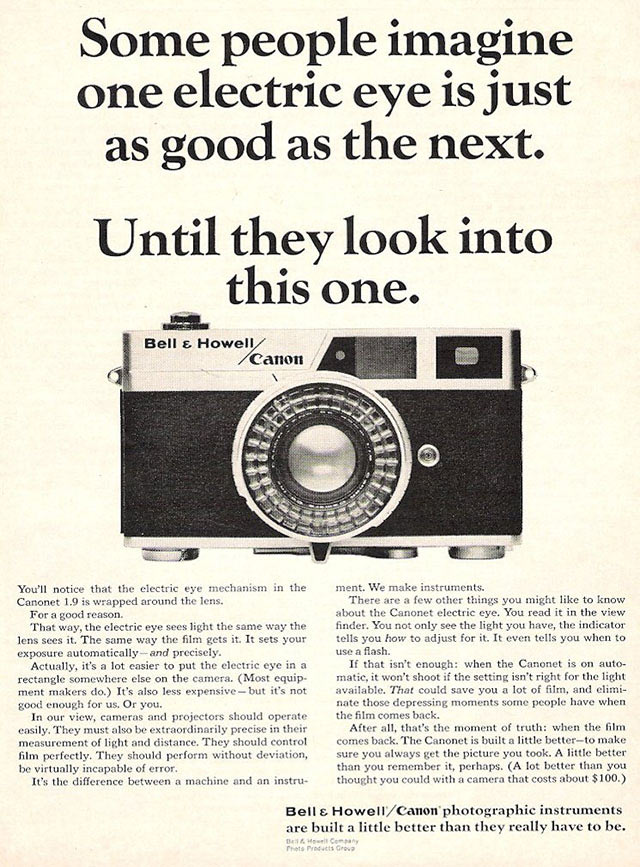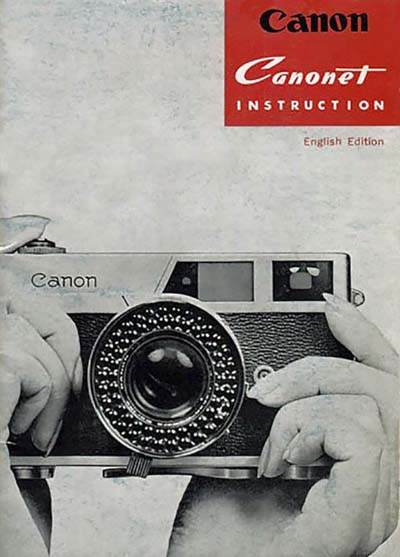The First Canonet
The medium sized Automatic Camera
Dates: Introduced January 1961.
Type: 35mm medium format rangefinder
Lens Mount: Fixed
Focus: Rangefinder
Exposure: Shutter Speed Priority
Modes: Manual, Automatic
Flash: PC Synch Plug
Shutter: Copal SV b plus 1 sec to 1/500th
ASA / ISO: ISO 10-200 (400)
Frame Rate: Manual Lever Winding
Battery: None
Accessories: Limited
Notes:
The original Canonet was simply called the “Canonet”. It was introduced in January of 1961 and was a runaway success from the first day. It was basically a simple automatic camera with a decent lens, manual rangefinder focus and a size and solidity of construction that was reminiscent of its high end camera heritage. It was aimed at the average person who wanted a simple camera but wanted good pictures.
Its lines are very clean. The top plate has nothing on it except an accessory shoe, not a hot shoe, and the shutter button. The film winding lever and crank is found on the bottom of the camera.
Film advance was performed with the left hand by pulling back on a lever with an end that turned down to give a firm grip to the finders of the left hand.
A selenium cell meter was arranged around the lens in a circular configuration in such a way that the light meter looked through any filters attached and automatically compensated for them. Filter diameter is 55mm. Because the camera has a selenium cell for metering light, the camera does not use a battery.
The lens is a fixed 45mm f/1.9 lens of decent quality. The shutter was a Copal SV mechanism with speeds from B to 1/500th of a second. This camera could take nice pictures.
Manual operation is accomplished by setting film speed, shutter speed and aperture. However, there is an automatic setting below f/1.9 on the aperture ring which engaged “shutter priority” automation. In Auto mode, if there was not sufficient light for a picture the shutter would lock up and could not be operated.
There are actually three variations of this camera. The first has no aperture scale in the viewfinder window and the ASA range is from 10 to 200 and there are no “Cloudy/Sunny” settings on the bottom of the lens barrel. The second variation shows an aperture scale in the viewfinder window, same ASA range, and “Cloudy/Sunny” settings on the bottom of the lens barrel. The Third Version is identical to Version Two except the ASA range is extended to 10 to 400.
Having said that, I have a Second Variation exactly as described (Ser. No. 454410) but I have a First Variation without the aperture scale but it has the “Cloudy/Sunny” markings on the bottom of the lens barrel (?) (Ser. No. 332276). This suggests to me that the change to the settings on the bottom of the lens barrel happened before the aperture scale was added and a small number of cameras were issued that fall between Variation 1 and Variation 2: a Variation 1a. I will have to check more cameras to see if that bears out.
The Canonet was also marketed under licence in the US of A as the Bell & Howell / Canon “Canonet 19”.
In the Collection I have two examples of the Canonet:
Collection No.: C-77
Serial No.: 332276
Condition: Excellent
Accessories: Excellent Leather case
Acquisition: 9 April 16
This camera appears to be a Variation 1 but it has the weather settings on the bottom of the lens barrel.
Collection No.: C-71
Serial No.: 454410
Condition: Excellent
Accessories: Excellent Leather case
Acquisition: 9 April 16
This is clearly a Variation 2.

